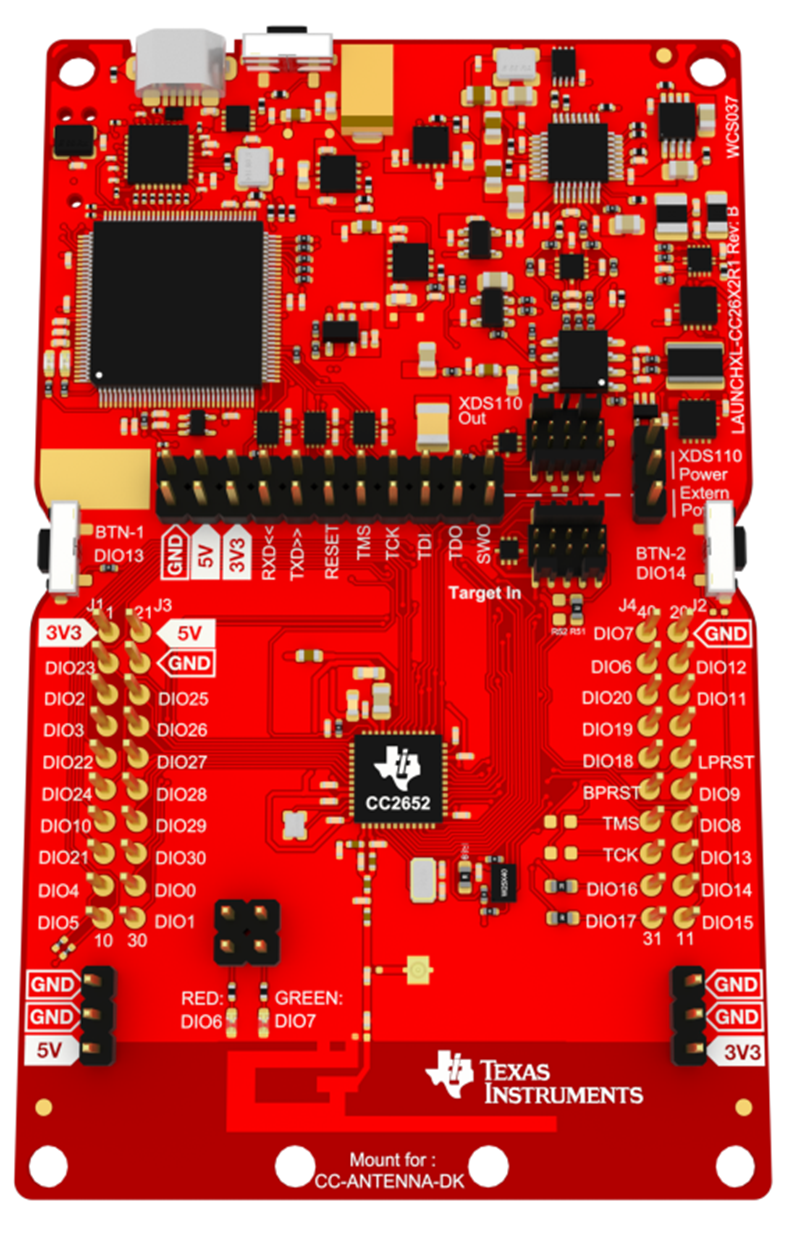SWRA478D February 2015 – January 2019 CC1310 , CC1312PSIP , CC1312R , CC1314R10 , CC1352P , CC1352P7 , CC1352R , CC2640 , CC2640R2F , CC2640R2F-Q1 , CC2642R , CC2642R-Q1 , CC2650 , CC2650MODA , CC2652P , CC2652R , CC2652R7 , CC2652RB , CC2652RSIP
5 Power Measurement Setup – Preparing the DUT
Before measurement and analysis can be performed, the device under test (DUT) must be prepared both from a hardware and software perspective. A peer device can also be configured in order to establish a connection. In this application report, a device running the example project HostTest [15] is used to establish the connection. This project can be run on any BLE-enabled development board and we have used a CC26x2R LaunchPad™ [19].
 Figure 5-1 Device
Under Test
Figure 5-1 Device
Under Test